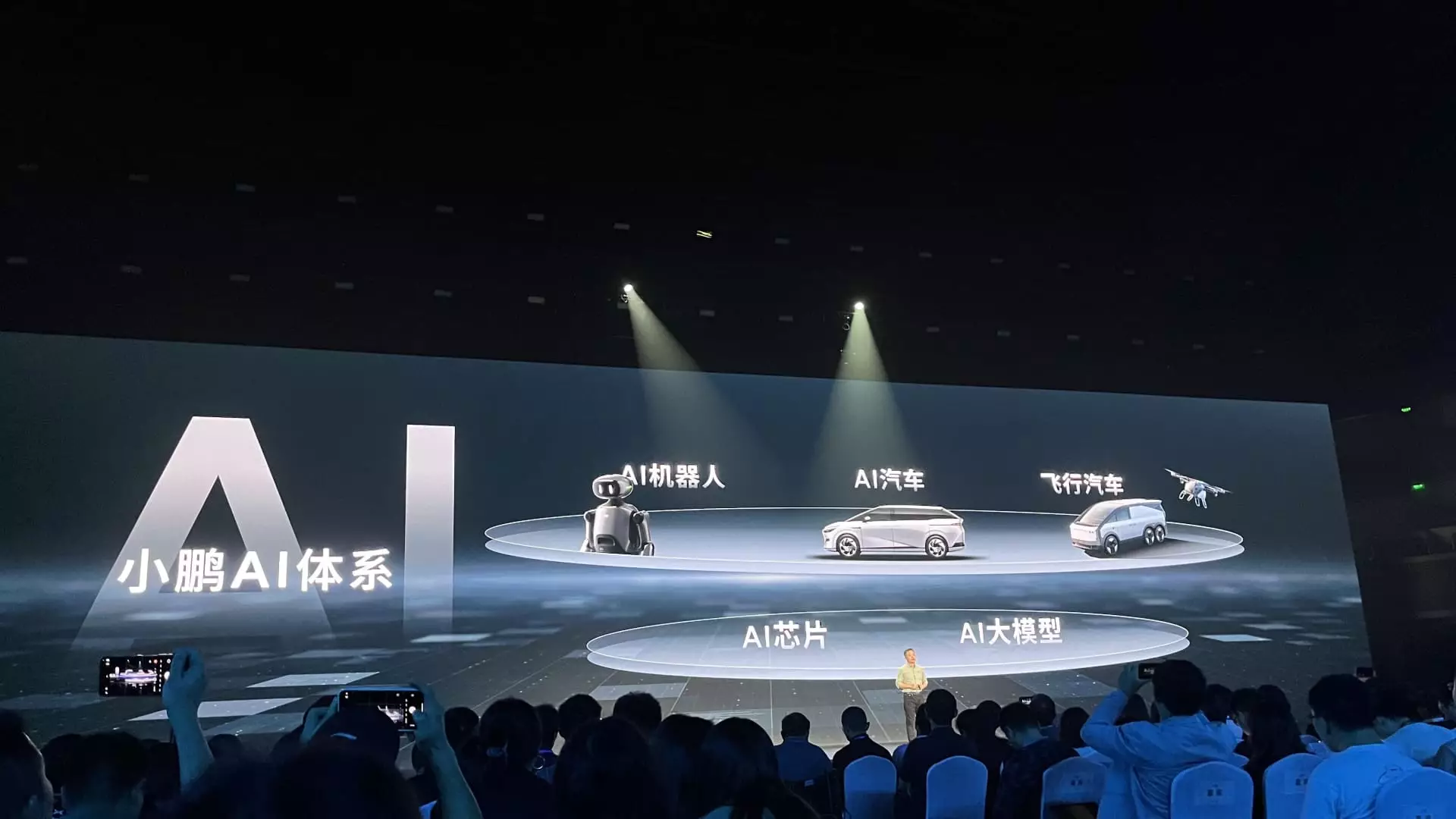In the fast-paced realm of electric vehicles (EVs), Xpeng Motors stands out as a formidable player amidst intensifying competition in China. This local startup, which has long been heralded for its commitment to innovation, is now reaping the rewards of its visionary investments in driver-assist technology. With over 30,000 car sales per month reported since November, the company’s trajectory is a clear indicator of its burgeoning influence in the auto industry. As Xpeng sets its sights on achieving profitability by the final quarter of the year, it raises a natural question: are we witnessing the dawn of a new era in electric mobility, or is the hype too good to be true?
Xpeng’s momentum appears unbeatable, especially with affordable models like the Mona M03 and the advanced P7+ leading the sales charge. The inclusion of sophisticated driver-assist software at no premium further cements Xpeng’s position as a consumer favorite. In an era where value for money reigns supreme, Xpeng is effectively usurping conventional definitions of what it means to own an electric vehicle. Yet, it’s crucial to acknowledge that this success was hard-won and doesn’t come without its challenges.
Promising Numbers but a Competitive Landscape
The enthusiasm surrounding Xpeng’s recent sales figures is palpable, but a critical examination reveals a harsh reality: the hyper-competitive nature of the Chinese EV market could easily stifle any brand, regardless of its recent achievements. Analysts, including those from Bank of America, express optimism, suggesting robust model pipelines will sustain Xpeng’s sales growth into 2025 and 2026. However, this optimism is often juxtaposed with warnings about the pitfalls that come with a saturated market.
Barclays’ analysts have also joined the fray, stating that while the product lineup is impressive, customer acceptance hinges on numerous variables — a sentiment that shouldn’t fall on deaf ears. As competitors like BYD unveil cutting-edge technologies, including ultra-fast charging and enhanced driver-assist systems, will Xpeng’s current allure diminish? The race is on, and it is the maybes and uncertainties that may give potential investors reason to hesitate.
Perceptions vs. Reality: The Analyst’s Dilemma
With varied analysis painting different pictures of Xpeng’s future, it’s essential to look beyond surface-level traders and consider the underlying currents shaping these opinions. J.P. Morgan’s analysts recently revised their forecasts and maintain a bullish outlook, suggesting that increasing sales volume will help the company thrive despite rising R&D expenses. They’ve adjusted their price target, reflecting optimism but cautioning that potential turbulence lies ahead.
However, the reality remains that while valuations soar, Xpeng’s IPO is now somewhat of a double-edged sword. Having gone public in both the U.S. and Hong Kong, the stakes are higher, and results must consistently meet lofty expectations. Fluctuating stock prices serve as a reminder that the market often reacts emotionally; investors must balance their aspirations with rational skepticism. Today, Xpeng may be hot, but will it withstand the low-temperature scrutiny that comes as reality sets in?
The Technological Arms Race
As the automotive industry embraces a technological renaissance, driver-assist features are swiftly transitioning from niche to mainstream. Xpeng’s strategy of including free L2 autonomy places it in a remarkably advantageous position. Industry leaders like Tesla, who may still consider advanced features as premium offerings, might face a pressing demand from consumers for similar perks.
Shay Natarajan of Mobility Impact Partners argues that the development of driver-assist systems is paramount, and any automaker that shies away from offering competitive features risks being left behind. As Xpeng conspires its “Max” version of its M03 model equipped with advanced navigation technology, it’s clear that to remain relevant, it must push the envelope even further. As the bar continually rises, Xpeng must not only innovate but also anticipate the ever-evolving expectations of consumers.
A Fork in the Road: Profitability vs. Growth
As Xpeng approaches its anticipated profitability by year’s end, the balancing act between sustainable growth and financial prudence becomes painfully evident. There is a pervasive notion that the road ahead could become treacherous; increased R&D costs, along with heightened competitors, spark fears of diluting margins. Analyst sentiments echo this concern, advocating for a cautious approach as they adjust their price targets amid fluctuating market conditions.
Investors must remain vigilant, as the race toward electric mobility is not just a sprint but a marathon filled with unexpected turns. Xpeng’s current climb to the top showcases its potential, yet the specter of rivalry looms large. Will the company harness its resources effectively to overcome the inevitable hurdles on this electrifying journey? The answers may redefine the landscape of electric vehicles in China as we know it today.

